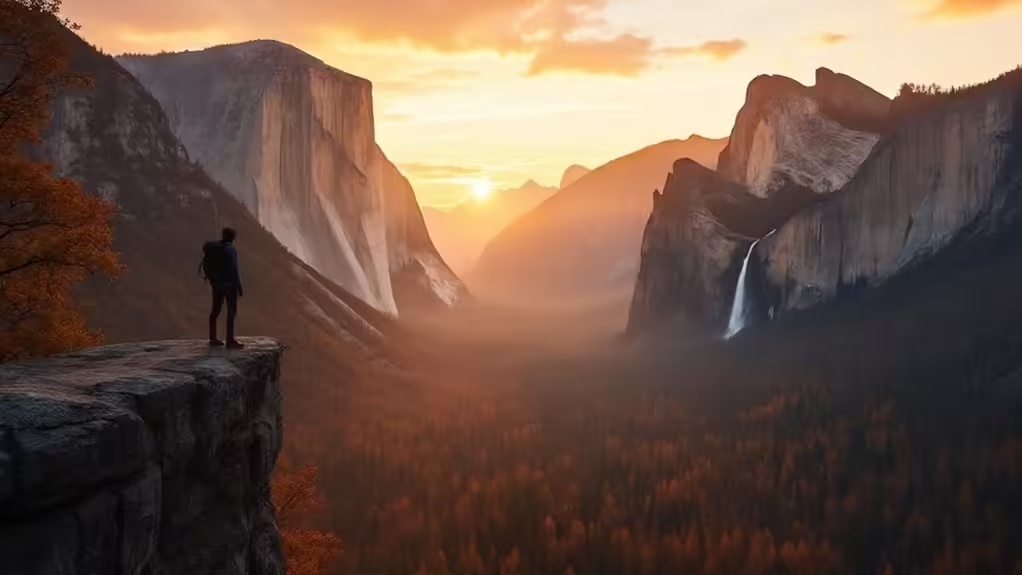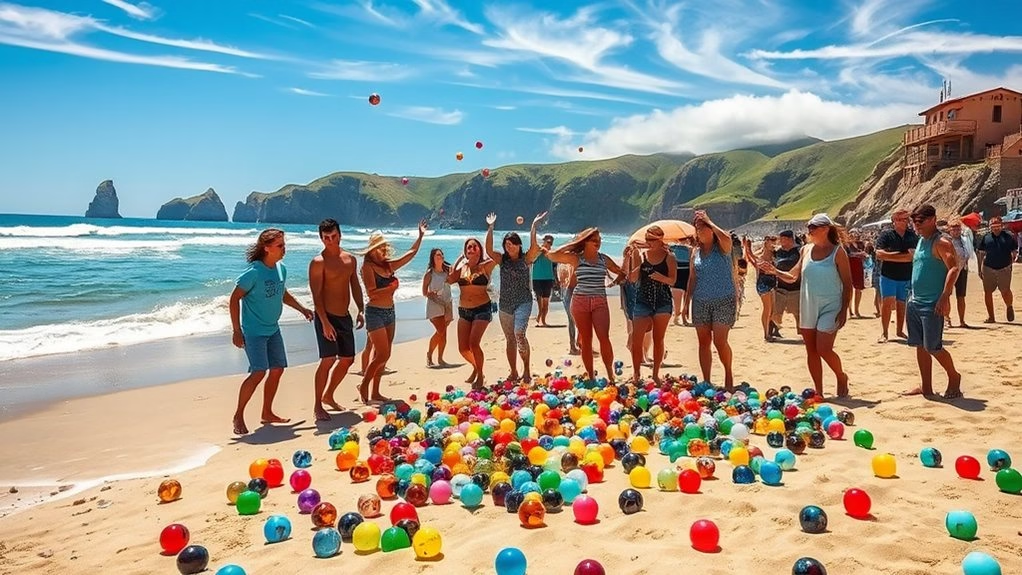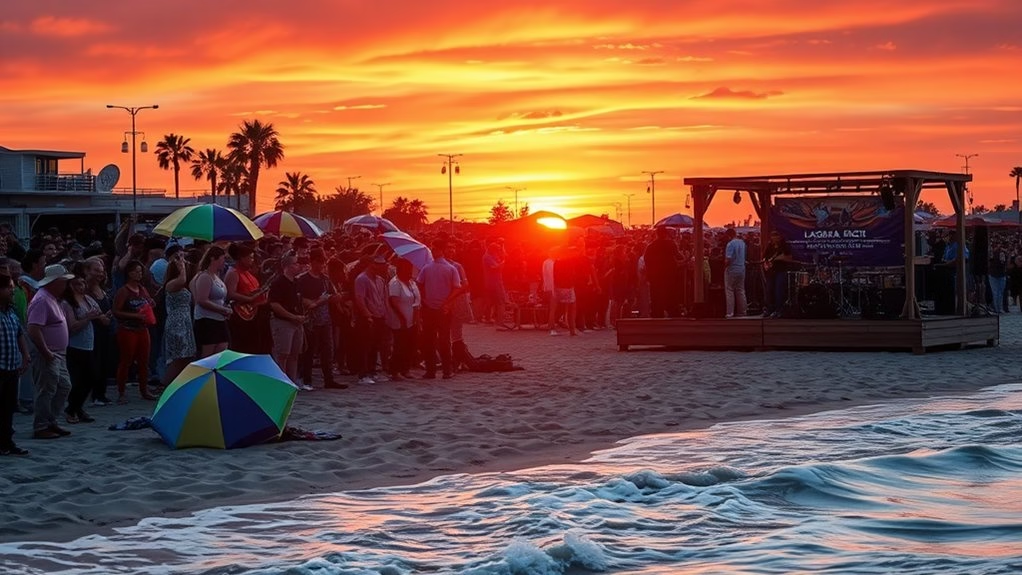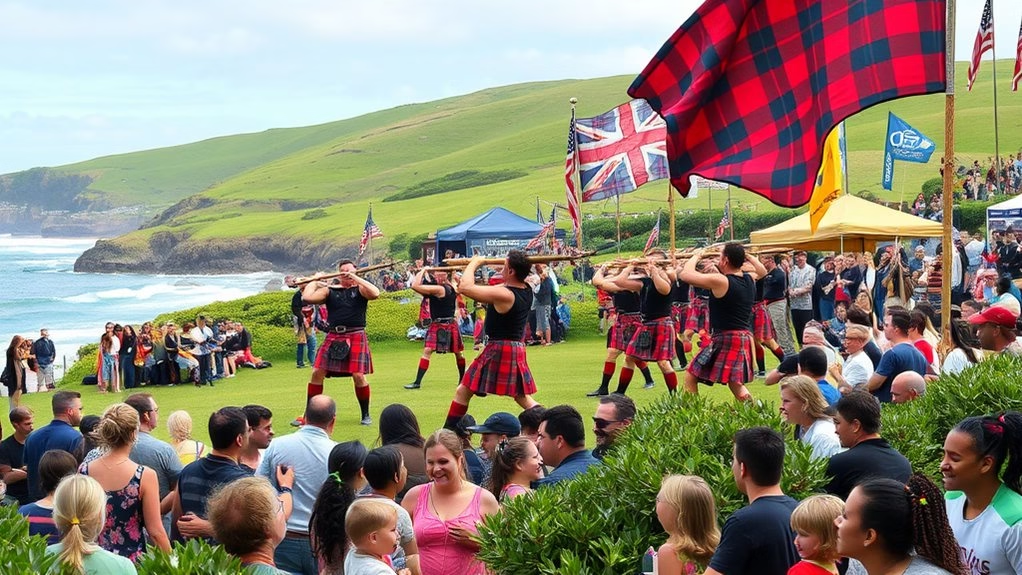The best times to visit California's national parks are during the spring and fall shoulder seasons. You'll enjoy mild temperatures, fewer crowds, and stunning natural displays like wildflower blooms or autumn colors. Late May and early October offer ideal weather and better accommodation availability. Each season brings unique opportunities: spring showcases Death Valley's wildflowers, summer allows full park access despite crowds, fall paints Sequoia in lively hues, and winter alters terrains for snow sports. Consider weekday visits to avoid weekend crowds, and book early for holiday periods. By timing your visit strategically, you'll maximize wildlife viewing chances and ranger-led program experiences.
Table of Contents
ToggleLearn More
- Late May or early October offer mild weather and better accommodation availability across California's national parks.
- Spring (March to May) is ideal for wildflower blooms in Death Valley and Joshua Tree.
- Fall (September to November) provides stunning autumn colors in Sequoia and Kings Canyon with fewer crowds.
- Summer (June to August) offers full park access but expect crowded conditions and high temperatures.
- Winter (December to February) transforms parks into snowy landscapes, ideal for winter sports and wildlife viewing.
Seasonal Highlights in California Parks
California's national parks offer unique experiences throughout the year, with each season bringing its own highlights. In spring, you'll find blooming wildflowers and mild temperatures, perfect for exploring Death Valley and Joshua Tree without the crowds. It's one of the best times to visit, as you'll have better luck with accommodations and enjoy pleasant weather across the parks. In the summer, higher elevations like Yosemite and Sequoia provide cooler escapes, while coastal parks like Point Reyes remain comfortably temperate. Fall brings vibrant foliage and fewer visitors, offering a peaceful time to explore. For a rejuvenating experience, don’t forget to visit some of California’s top healing hot springs, where you can relax and soak in the natural mineral baths after long days of hiking and exploration. In particular, California desert wildflower blooms in parks like Anza-Borrego and Mojave National Preserve are a breathtaking sight, with vibrant swaths of color covering the arid landscape. By early summer, higher elevation parks such as Yosemite and Sequoia become more accessible as the snow melts, opening up scenic hiking trails and panoramic vistas.
Summer brings warm, dry days ideal for outdoor escapades, but be prepared for extreme heat in some areas. Fall paints the scenery with stunning autumn colors, especially in Sequoia and Kings Canyon. You'll encounter fewer visitors and cooler temperatures, making your experience more enjoyable. Winter converts the parks into snowy wonderlands, offering opportunities for winter sports and wildlife viewing in places like Yosemite and Lassen Volcanic.
For the ultimate California park experience, aim for late May or early October. You'll find milder weather and better availability for accommodations and activities. Remember, each season has its perks, so choose the time that aligns with your interests and desired level of freedom in the great outdoors.
Weather Patterns and Park Access

When planning your visit to California's national parks, it's essential to consider the diverse weather patterns and how they affect park access. You'll encounter a wide range of conditions, from scorching summer temperatures in Death Valley to near-freezing winters in Yosemite. To make the most of your expedition, aim for the shoulder seasons of spring and fall. These periods offer the best time to visit, with cooler weather and fewer crowds, perfect for wildlife viewing and outdoor activities.
Keep in mind that park access varies depending on location and time of year. Northern parks like Lassen and Redwood often rely on snowmelt, so it's best to wait until after May. Southern parks such as Joshua Tree and Death Valley are accessible earlier, around late February. Summer months provide full access to all parks, but you'll face crowded conditions and high temperatures. Winter can bring road closures in higher elevations, so always check the National Park Service website for up-to-date information. By planning around these weather patterns, you'll guarantee a more enjoyable and freedom-filled experience in California's stunning national parks.
Crowd Levels Throughout the Year

Understanding crowd levels is essential for planning your California national park visit. If you're seeking solitude and freedom, you'll want to avoid the peak season of July and August. During these months, popular parks are lively with visitors, and you'll face limited accommodation options and crowded trails.
For a more relaxed experience, consider visiting during the shoulder seasons. From April to June and September to October, you'll enjoy pleasant weather and fewer crowds. You'll have more space to roam and connect with nature on your terms.
Winter brings a different vibe to the parks. From November to March, visitation levels drop, especially in snowy areas. However, some parks still attract winter sports enthusiasts, so plan accordingly.
To maximize your freedom, try visiting on weekdays. Weekends tend to draw larger crowds, particularly during peak season. Keep in mind that holidays like Memorial Day and Labor Day can cause significant spikes in visitor numbers. If you're planning a trip around these times, book accommodations well in advance and be prepared for busier parks.
Wildlife Viewing Opportunities

Wildlife enthusiasts will find that timing their visits to California's national parks can greatly enhance their chances of immersing themselves in diverse fauna. While Yellowstone National Park provides exceptional wildlife viewing chances from January to March, with fewer crowds and snowy backdrops, California's parks have their own unique experiences.
In Joshua Tree National Park, December is a great time to spot desert tortoises and bighorn sheep. The cooler temperatures make it more comfortable for both animals and visitors, and you'll encounter fewer crowds. For a coastal excursion, head to Redwood National and State Parks in October. You'll have the chance to witness migrating gray whales off the coast and spot Roosevelt elk in the lush underbrush.
Although not in California, it's worth noting that August is the best time to visit Denali National Park for wildlife viewing. The long daylight hours increase your chances of seeing grizzly bears, caribou, and Dall sheep. By planning your visits strategically, you'll maximize your opportunities to connect with nature and observe fascinating wildlife in their natural habitats.
Special Events and Ranger Programs
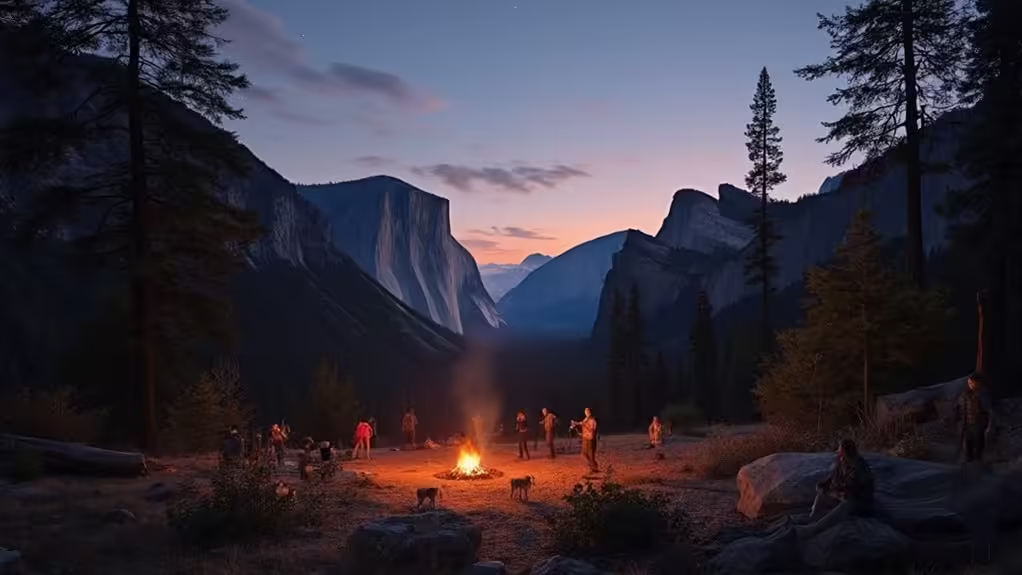
California's national parks come alive with special events and ranger programs throughout the year, enhancing your visit with unique experiences and educational opportunities. You'll find a wealth of activities that'll ignite your passion for nature and exploration. In spring, join guided hikes like the "Wildflower Walks" in Death Valley, where you'll witness the desert bursting with colorful blooms. Summer brings evening campfire talks and nature walks in Yosemite and Sequoia, offering revelations into the parks' rich natural and cultural history.
If you're traveling with kids, don't miss the Junior Ranger program at Joshua Tree and Lassen. They'll love earning badges through fun educational activities. For pet owners, the "Bark Ranger" program in Sequoia teaches you about pet safety while exploring the park with your furry friend. Wildlife enthusiasts should time their visits with seasonal ranger programs that coincide with key events, like elk mating season in Grand Teton. These programs offer unparalleled opportunities to observe and learn about wildlife in their natural habitats. By participating in these special events and ranger programs, you'll gain a deeper appreciation for California's magnificent national parks.
Frequently Asked Questions
What Are the Best Months to Visit California National Parks?
You'll love visiting California's national parks in late May or early October. You'll dodge peak crowds, enjoy milder weather, and have an easier time snagging lodging. It's your chance to experience nature's beauty without the hassle. Plus, you’ll have plenty of time to explore California’s top scenic state parks, which offer breathtaking landscapes and unique ecosystems. Whether you’re hiking through towering redwoods or soaking in dramatic coastal views, there’s something for everyone. These parks provide the perfect blend of adventure and tranquility, making for an unforgettable getaway.
What Is the Best Month to Visit the National Parks?
Don't let crowds deter you! You'll find your sweet spot in early October. You're free to investigate with mild weather, lively fall colors, and fewer tourists. It's your chance to experience nature's grandeur on your own terms.
What Is the Best Month to Visit California?
You'll love California in October! It's your chance to roam freely with perfect weather and fewer crowds. You can investigate beaches, mountains, and parks without breaking a sweat or battling summer tourists. Welcome the journey!
What Is the Best Time of Year to Visit Yosemite National Park?
You'll feel liberated exploring Yosemite in late May or early October. You're free from summer crowds, yet blessed with stunning views. Experience waterfalls at their peak or lively fall foliage. It's your chance to welcome nature's raw beauty.

